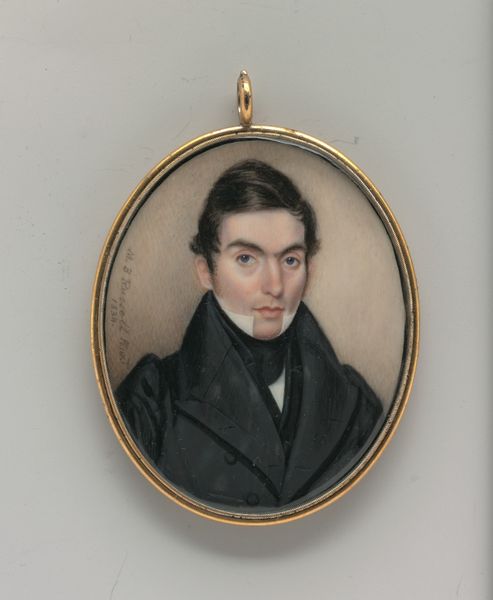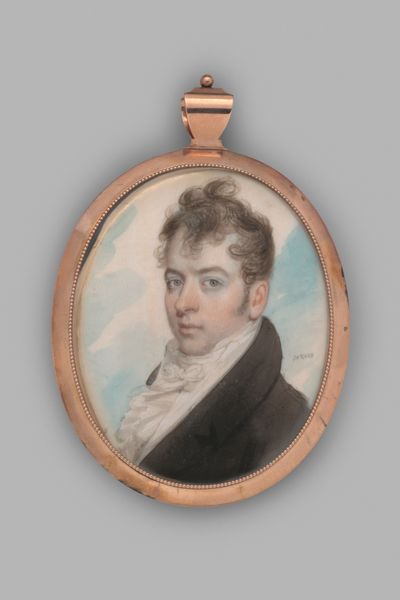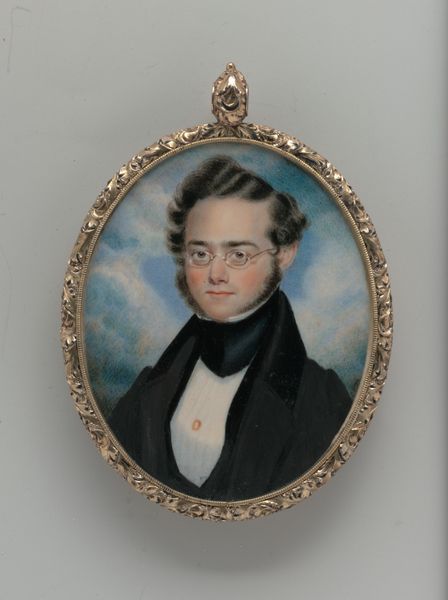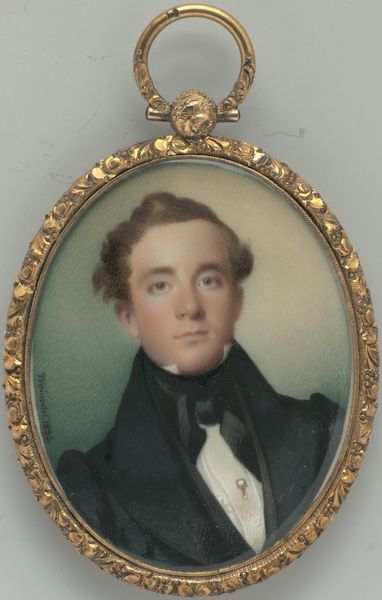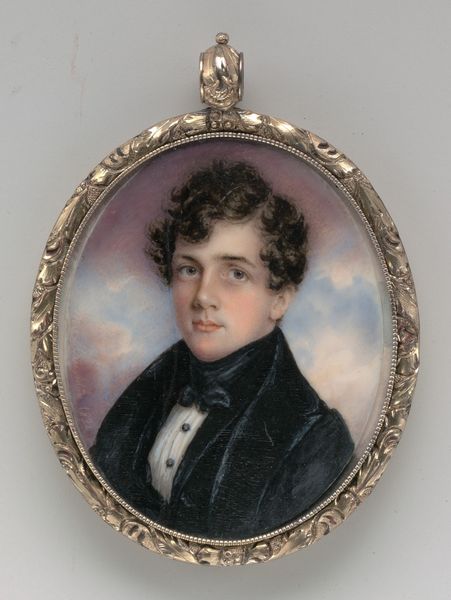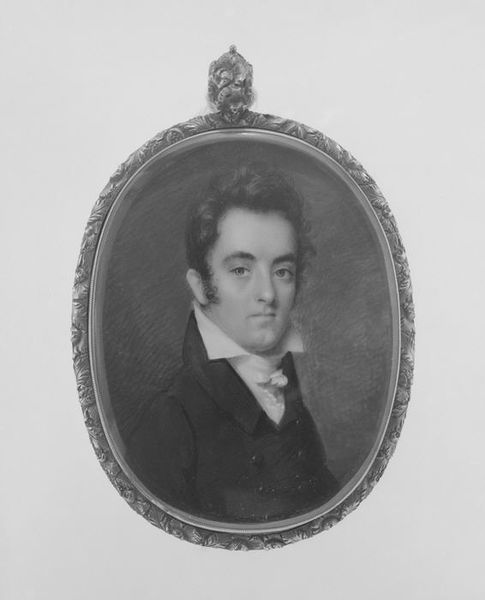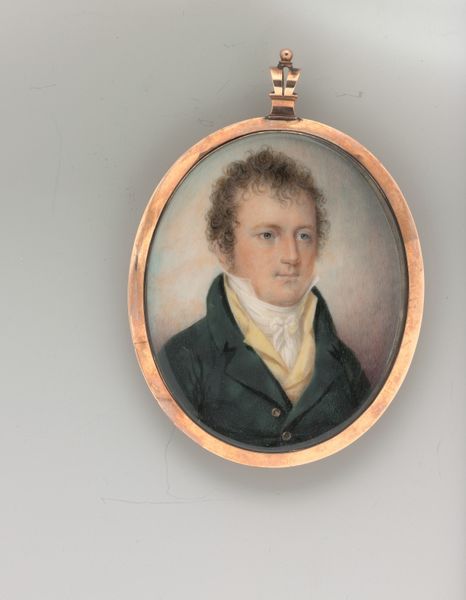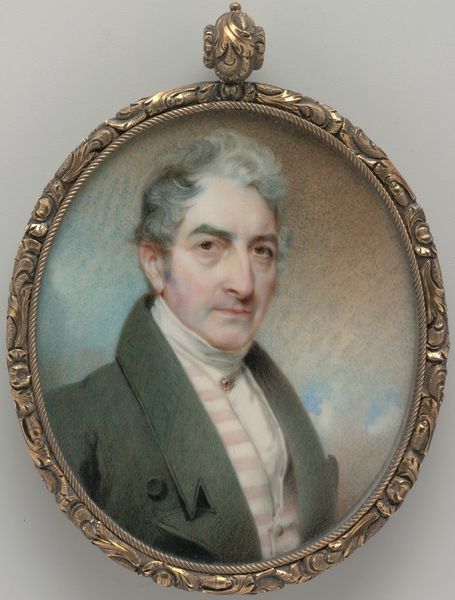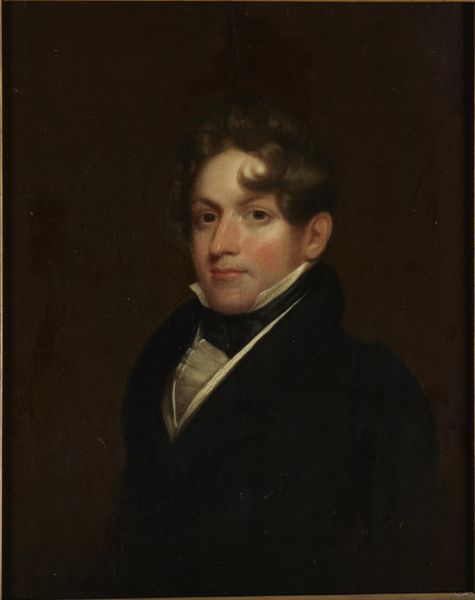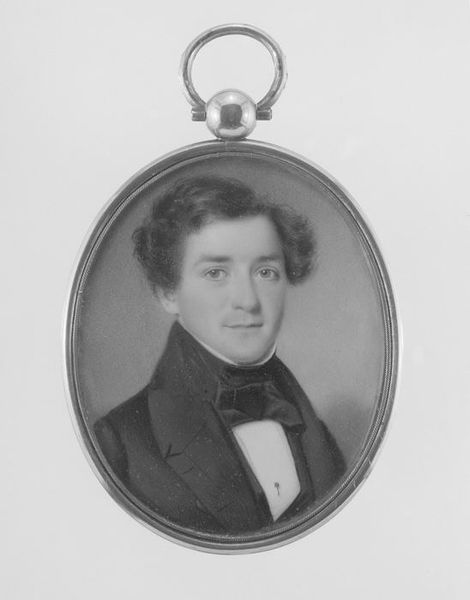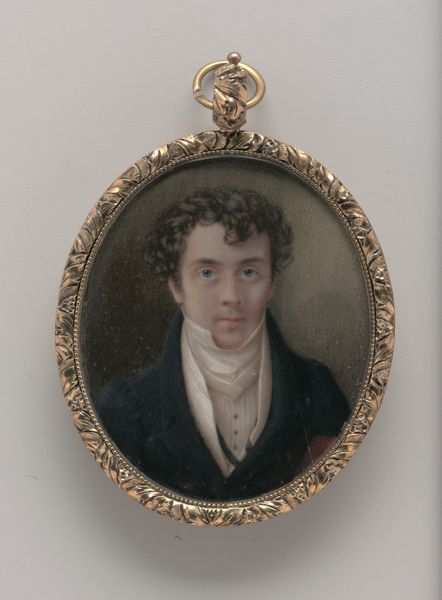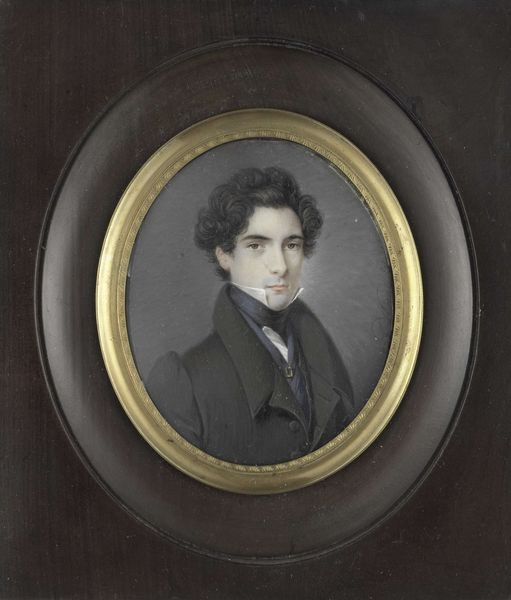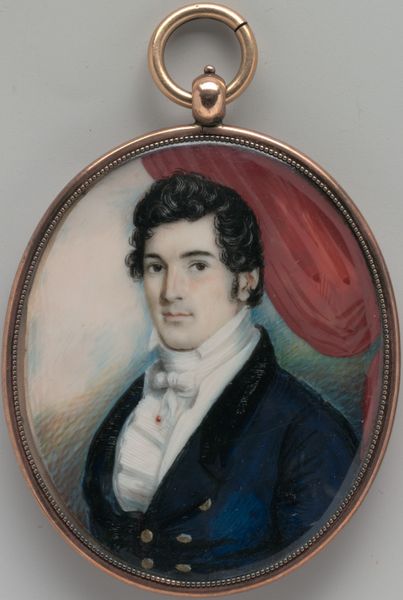
painting
#
portrait
#
painting
#
romanticism
#
academic-art
#
miniature
Dimensions: 2 9/16 x 2 1/8 in. (6.5 x 5.4 cm)
Copyright: Public Domain
Curator: The first thing I notice about this image is its size—it is incredibly small and contained. Is it meant to be worn as jewelry, perhaps? Editor: Indeed, this is "Portrait of a Gentleman" created between 1831 and 1834 by Moses B. Russell, an artist well-known for his miniature paintings. You will find this precious piece at the Metropolitan Museum of Art. It’s quite typical of the era when miniature portraits were cherished personal items, weren't they? Curator: Absolutely. The Romanticist tendencies of that period emphasized emotional expression and idealized representations. His serious expression seems a hallmark of Romantic portraiture—brooding, perhaps a little melancholic? But let's look closer, are those symbols hinting at something? Editor: Symbolically, the stark dark jacket contrasts vividly with his pallid complexion and gives the piece gravitas; note how the artist signs the miniature on the right, a feature giving authenticity. The gentleman’s gaze, direct but gentle, suggests an openness, belying that surface melancholy. These objects frequently transcend their mere depiction to become mementos of deeper emotional resonance. Curator: Agreed. Thinking about this historically, the portability of these miniatures had significant social implications. They fostered personal connections in an era vastly different from ours; where keeping a loved one ‘close’ wasn’t merely metaphorical. It's a tangible representation of memory culture. Editor: And thinking more about materials, the very small scale concentrates the image's emotional intensity. What may we discover beyond the superficial similarity to modern lockets in his bow tie or perhaps the way he wore his hair. In modern photography, we might capture this subject, only more casually. Yet the artist insists, in painting, we reflect for long durations about an individual and capture details that we later cherish. Curator: Precisely, the societal act of commissioning and giving such an intimate object underlines its purpose: it's meant to circulate and maintain a carefully-constructed image within a closed, private network. Editor: This small portal offers insight into emotional, cultural practices. It acts as an enduring echo chamber for the era, underscoring what was valued—fidelity, remembrance, and individual dignity in a Romantic guise. I think this warrants future, continuous attention. Curator: Indeed, examining this miniature, knowing how people moved, perceived, and remembered at that time definitely expands the picture that's beyond mere image.
Comments
No comments
Be the first to comment and join the conversation on the ultimate creative platform.
